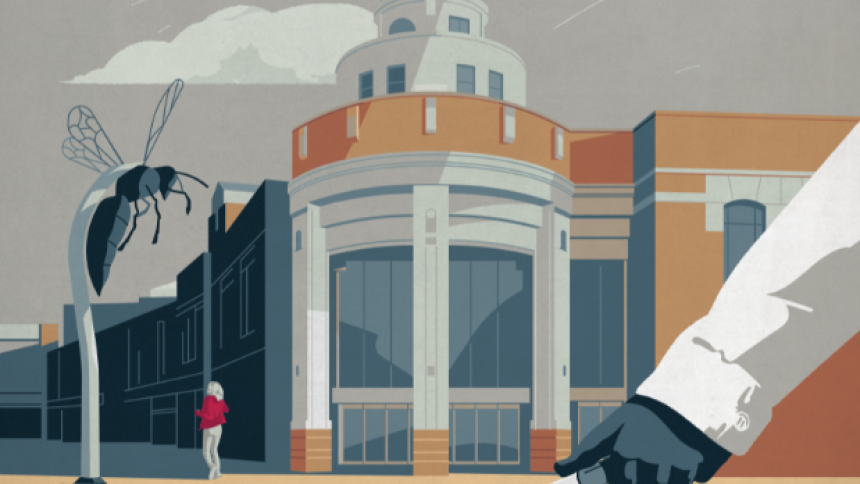
Watford: Crime Profile
Murdertown is a true crime series that looks behind the headlines of some of the most shocking and complex homicide cases in recent British history. Following host Katherine Kelly as she travels to different communities across the country, Murdertown brings together police interviews and victim testimonies to tell the full story of these brutal crimes from beginning to end.
In Watford, Katherine Kelly focuses on the sudden slaying of a woman in the year 2000. It looked like a crazed and senseless attack on a person who was just walking her dog in a park. Eyewitnesses saw a suspect fleeing desperately – and, for some reason, semi-naked – across the M1 motorway. But was it really random? Was it significant that the victim had a twin sister? And could there have been a connection to the killing of Rachel Nickel on Wimbledon Common, many years before?
The episode delves into all these questions, but what other crime secrets does Watford and the surrounding region have in its past?
Once described by Daniel Defoe, the author of Robinson Crusoe, as a “genteel market town”, Watford really began to boom in the Victorian era and is one of the major communities of Hertfordshire. The county has witnessed a number of sordid crimes over the centuries, and was the haunt of one of Britain’s most peculiar and notorious serial killers – the so-called “Teacup Poisoner”.
Before we get to him, though, it’s worth mentioning another local man who earnt a memorable moniker: the Pie Man of Hertford. The exact details of his crimes have been lost in time – he was active in the 18th Century, after all – but Walter Clibborn has become mythologised in the region as one of the most dastardly and cunning highwaymen of his day.
The reason? He posed as everybody’s friend – the jovial local pie man, who would drink in taverns and earn the trust of merchants as they passed through Hertfordshire. Those same people would then be ambushed and viciously robbed by cutthroats who somehow knew exactly where the victims had hidden their money. Clibborn was only unmasked as the ringleader of the ruffians after he was shot dead while attempting to rob one of his victims with a knife. It’s said his body was then put on display by the righteous locals, with crowds flocking to see the man responsible for terrorising the region.
In more recent years, communities close to Watford were rocked by the exploits of a contemporary criminal whose MO stunned even hardened detectives. This was the man dubbed the “Jigsaw Killer” by the press, because he left pieces of his victim scattered across different locations. The cut-up corpse had to be painstakingly pieced together by the authorities to get to the bottom of just what had happened.
It was either or a joint of meat or something a lot worse.
More pieces of the “Jigsaw Man” were later found, including a decapitated head and a torso which showed the victim had been stabbed in the back. Putting together the pieces, the police identified the dead man as salesman Jeffrey Howe. Thankfully, the culprit proved not to be a serial killer launching into a game with the cops. He was, in fact, Howe’s lodger – a man named Stephen Marshall, whom the kind-hearted Howe had put up rent-free. Marshall repaid Howe’s generosity by murdering him and chopping him up – allegedly something he was already experienced in, having apparently worked for a mob family and disposed of numerous bodies using a meat cleaver and hacksaw.
Marshall’s crime was a grisly as they come. But one of Hertfordshire’s most infamous killers operated in a rather more subtle way. He was Graham Young, the “Teacup Poisoner”, who operated in Bovingdon, just a short drive from Watford.
Dubbed the “mad professor” at school because of his fascination with laboratory chemicals, Young soon progressed to poisoning members of his own family, just to see what would happen. Held responsible for the death of his stepmother, despite a lack of concrete evidence, he was sent to Broadmoor. Several years later, Young was deemed fit and well enough to return to society – a fatal error which led to the obsessive poisoner getting a job in a Bovingdon company.
Here, the apparently “cured” Young began poisoning his co-workers, lacing teas and coffees with toxins and noting down his observations of their excruciating pain, rather like a scientist observing test subjects. Two men perished, and it was only Young’s own ego that attracted the attention of superiors, when he helpfully suggested that the mystery illness affecting employees had all the hallmarks of poison.
He would die in prison in 1990. His crimes would have a dire legacy, though, with a schoolgirl in Japan almost killing her own mother in 2005 in direct homage to Graham Young, the poisoner of Hertfordshire.
Watch Murdertown, Mondays at 9pm.







